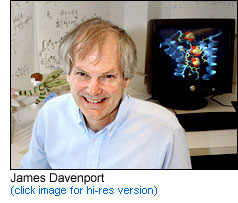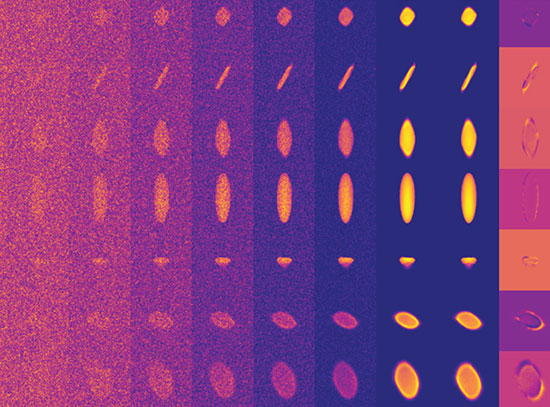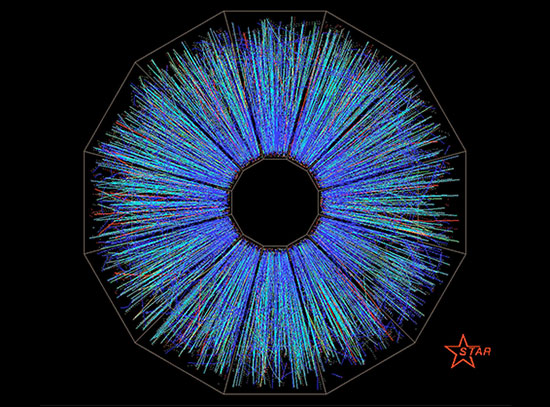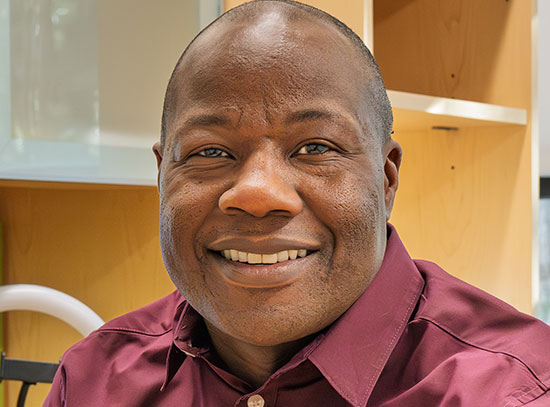Brookhaven Lab Forms a Computational Science Center to Focus on Computational Biology
James Davenport Selected as Center's Director
October 28, 2004
UPTON, NY - The U.S. Department of Energy's (DOE) Brookhaven National Laboratory has formed a new Computational Science Center, effective October 1, to expand its computing capabilities in numerous areas of science, including computational biology, physics, applied mathematics, and nanoscience. With a staff of 15 and a $2 million annual budget funded by DOE's Office of Advanced Scientific Computing Research and the Laboratory's development funds, the new center will replace Brookhaven's five-year-old Center for Data Intensive Computing (CDIC) and incorporate staff of the Laboratory's Scientific Computing Services group.
James Davenport, who had been Associate Director of CDIC, has been named the Director of the new center. James Glimm, Distinguished Professor of Applied Mathematics and Statistics at Stony Brook University, who served as Director of CDIC, will oversee the applied mathematics program within the new center.
"As computers have become more powerful, they have become indispensable to the conduct of science," Davenport said. "All of the big machines at Brookhaven, such as our premiere physics facility — the Relativistic Heavy Ion Collider (RHIC) — require sophisticated computing power. At the same time, the computing needs of biologists are growing rapidly. Also, sophisticated computing capabilities will be important for researchers working at Brookhaven's Center for Functional Nanomaterials when it opens in 2007."
Brookhaven already has an annual investment of approximately $20 million in data storage and distribution, as well as computational analysis for experiments at RHIC and the ATLAS detector at the Large Hadron Collider at CERN, the European laboratory for particle physics.
Computational analysis of large biological databases, computer-modeling of protein folding, determining protein structure, and understanding interactions of proteins with each other require extremely powerful computers because of the large quantities of data involved in these investigations. Computers have become central to discovering the
mechanisms underlying complex biological systems and interactions. In computational biology, scientists use computers to create interactive models of the systems they study.
The Laboratory is on track to acquire two massively parallel computers for nuclear and high energy physics, which will be in operation next year. Known as QCDOC, for quantum chromodynamics on a chip, they will share a similar architecture with IBM's Blue Gene/L, the world's faster computer. These computers, designed by a team from Columbia University, IBM, and the RIKEN BNL Research Center, contain more than 10,000 IBM processors, each with its own memory and an extremely fast interprocessor communication network. Each processor is connected by 24 wires to its neighbors — the equivalent of a 24-lane superhighway for data sharing. These computers will be used by physicists for calculations in quantum chromodynamics — the physics theory that describes the interactions of subatomic particles called quarks and gluons — 75 percent of the time, while researchers pursuing other scientific projects will be able to use them the remaining 25 percent of the time.
James Davenport earned bachelor's and master's degrees in electrical engineering from Brown University in 1967, and from Princeton University in 1968, respectively. He then went on to earn a Ph.D.in physics from the University of Pennsylvania in 1976.
From 1968 to 1971, Davenport was a member of the technical staff of RCA Laboratories in Princeton, New Jersey. He served as a postdoctoral fellow at the University of Pennsylvania from 1976 to 1977 and worked as a researcher the following year at the Institute of Theoretical Physics, Chalmers University, Gothenberg, Sweden. After joining Brookhaven Lab in 1978 as an assistant physicist, he rose to become Condensed Matter Theory Group Leader in 1986, Associate Chair of the Physics Department in 1993, Chair of the Applied Science Department from 1994 to 2000, and Associate Director for CDIC in 2000. Davenport is a Fellow of the American Physical Society.
2004-10236 | INT/EXT | Newsroom










